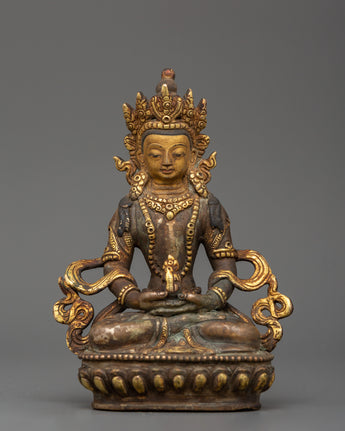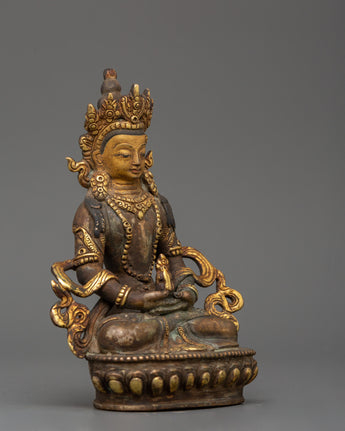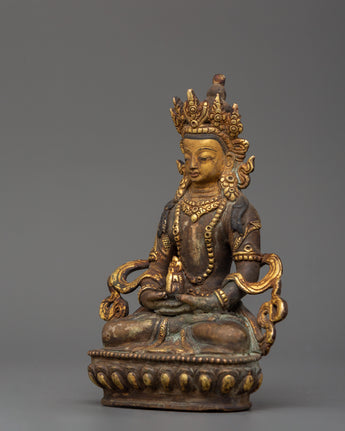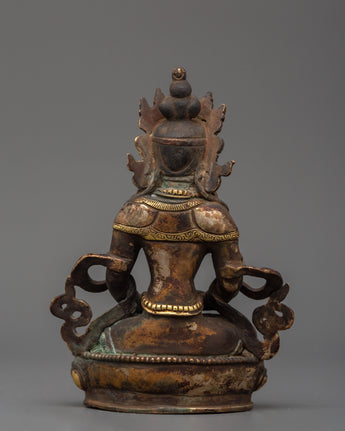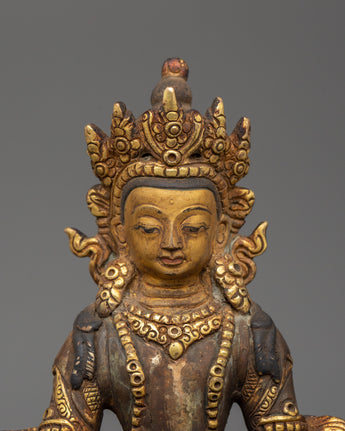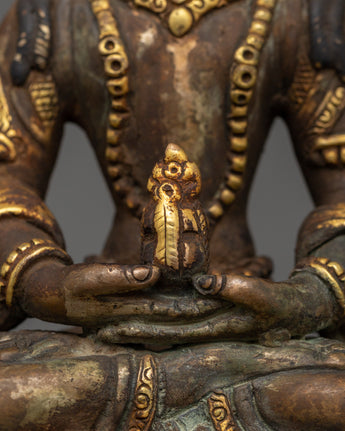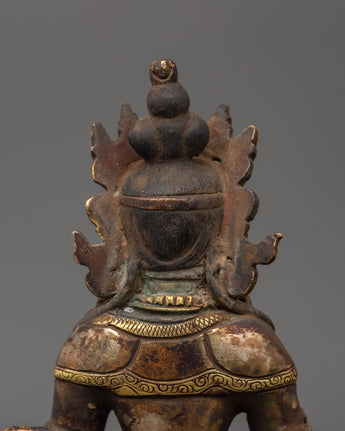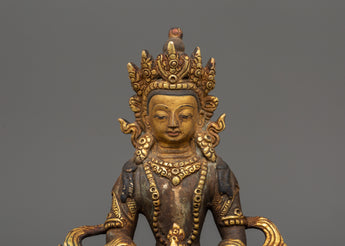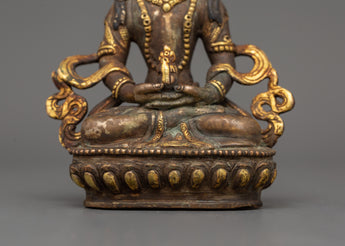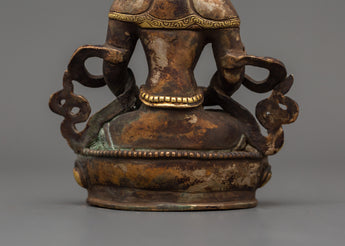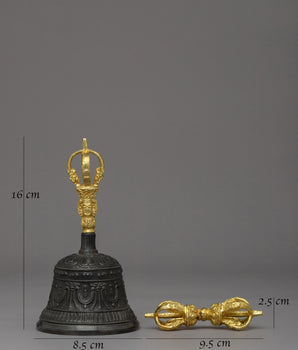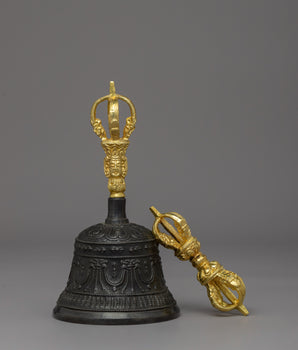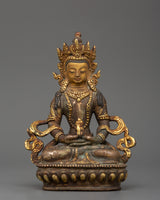
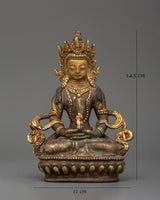
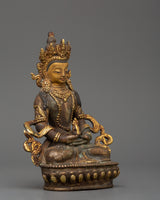
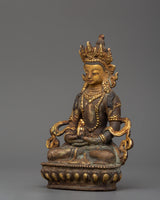
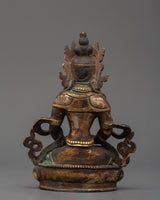

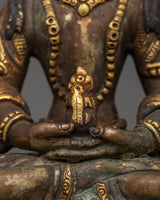
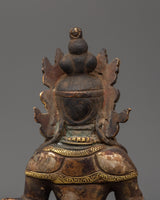
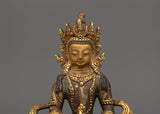
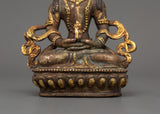
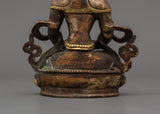
Amitayus
Tibetan Amitayus Deity Figure | for Longevity Blessings
------------------------------------------------------------
Size: 14.5cm (Height) x 11cm (Width)
Weight: 0.59kg
Material: Copper body, Antique Finish
------------------------------------------------------------
About our Statue:
This Tibetan Amitayus Deity Figure is a sacred image of the Buddha of Infinite Life, masterfully carved from copper with an exquisite antique finish. This statue, which stands 14.5cm tall and 11cm wide and weighs 0.59kg, is excellent for personal altars, meditation spaces, and Buddhist shrines. Amitayus sits in a tranquil meditation pose, holding a long-life vase (kalasha), representing infinite vitality, healing, and the desire for longevity. The crown, jewels, and robe are intricately detailed, reflecting the rich symbolism of Tibetan artistry and spiritual workmanship.
Amitayus, a deity adored in Mahayana and Vajrayana traditions, is associated with longevity, wisdom, and merit. Placing this deity in your sacred area invokes benefits for a long, healthy, and enlightened existence. The statue's antique patina reflects a timeless spiritual energy, making it both a strong spiritual object and a valuable piece of Himalayan art. This Amitayus sculpture is a dazzling emblem of boundless life and inner calm, whether utilized for daily meditation or devotional practice.
Introduction to Amitayus Buddha:
Amitayus, often known as "The Buddha of Endless Life," is a sambhogakaya aspect of Amitabha, commonly linked with longevity. He is frequently depicted reclining and holding a vase with the nectar of immortality. Amitayus is one of the three gods of immortality.
How do you take care of your statues?
• Place them at room temperature, avoiding direct sunlight.
• Make sure that the area where your statue is placed is entirely free of moisture and dust.
• Place it at the highest place on your altar after being consecrated by a Lama/monks. The best practice is to keep them covered inside a glass cabinet.
• Do not use your bare hands or any objects with a rough surface to wipe the face. Directly touching objects with the bare hand can smudge the face, leaving scratches.

